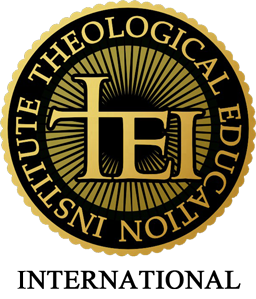Contrabortion, Vol. 1, No. 2, September/October, 1984
Reversing the Reversal
John C. Rankin
The only true and effective basis for dealing with the crime and sin of abortion is in a sound understanding of the Bible that begins with the central doctrines of Creation, Sin and Redemption. These foundational doctrines are set forth in Genesis 1-3, and another way they may be labeled is: the Order of Creation, the Reversal, and the Reversal of the Reversal. By learning this “reversal theology,” we come to know the true nature of the abortion controversy, and we come to know the biblical strategy for dealing with it.
In Genesis 1, we see that the whole universe was created by the divine command of Yahweh. The poetic structure of this chapter underscores a definite order where God set humankind to rule over his handiwork. God’s creation was designed for our exercise of responsibility and freedom to enjoy as his image bearers. The Order of Creation places humanity under Yahweh, as further outlined in Genesis 2, also defines the boundaries of freedom as obedience to God, and accordingly protects sexual love and childbearing within marriage.
But Satan sought to reverse this Order of Creation as he seduced Eve through the serpent in Genesis 3. Since the serpent belonged to the animal kingdom, Eve had authority over it. But in her failure, and in Adam’s subsequent failure to countermand the serpent, sin was introduced, freedom’s boundaries of protection were violated, and Adam and Eve lost their authority as vice-regents of Yahweh. Satan’s objective, stemming from his failure to dethrone God prior to the Creation, was to dethrone humanity’s place of authority as a strategy for attacking God. Satan did not have access to God directly, so he attacked those who were uniquely made in God’s image.
Yahweh’s response, in the midst of the Curse which followed the entrance of sin, was to institute the “reversal of the reversal.” In Genesis 3:15, we see that God promises to bring the Messiah through the cursed womb, the “offspring” who will crush Satan’s head. Here God reverses Satan’s strategy. Christ, as the Second Adam, first comes as a Suffering Servant and submits to death on the Cross. In so doing, he is “struck on the heel” by Satan. But then Christ pulls off the Great Reversal as he rises from the dead. In so doing, he permits the regaining of humanity’s vice-regency under Yahweh, regaining the place of authority ordained in Creation. This is redemption, the buying back of the human race from slavery. It is the culmination of God’s numerous examples of reversing the reversal, from giving a son to the aged Abraham, to placing Joseph as governor of Egypt, to the Exodus, to the kingship of David onward.
Reversal theology defines for us the strategy of Christian lifestyle as live between the first and second comings of Christ. As agents of God’s redemptive love, we are to be actively “reversing the reversal” in all we do. Our whole identity is in the death and resurrection of Christ, pointing toward his return when he will complete the crushing of Satan’s head. And we are called to participate in that crushing process, exercising authority as God’s redeemed image bearers. And the way we crush Satan’s evil oppression is in knowing the power of reversing the reversal — giving that we might receive, dying that we might live. This applies to all areas of social justice where the Gospel is designed to permeate society through us. And it especially applies to abortion, where Satan attacks the most helpless in our midst.
The 1973 U.S. Supreme Court “Roe v. Wade” decision allowing abortion on demand was an historical, legal, moral, medical and ultimately a theological reversal. It ran counter to over a century of U.S. Law, and it directly challenges over 5,000 years of Hebrew-Christian testimony concerning the sanctity of human life. It was a reversal of a social order that had protected the unborn. Yahweh, who comes to us in Jesus, calls us to reverse that reversal.
###


